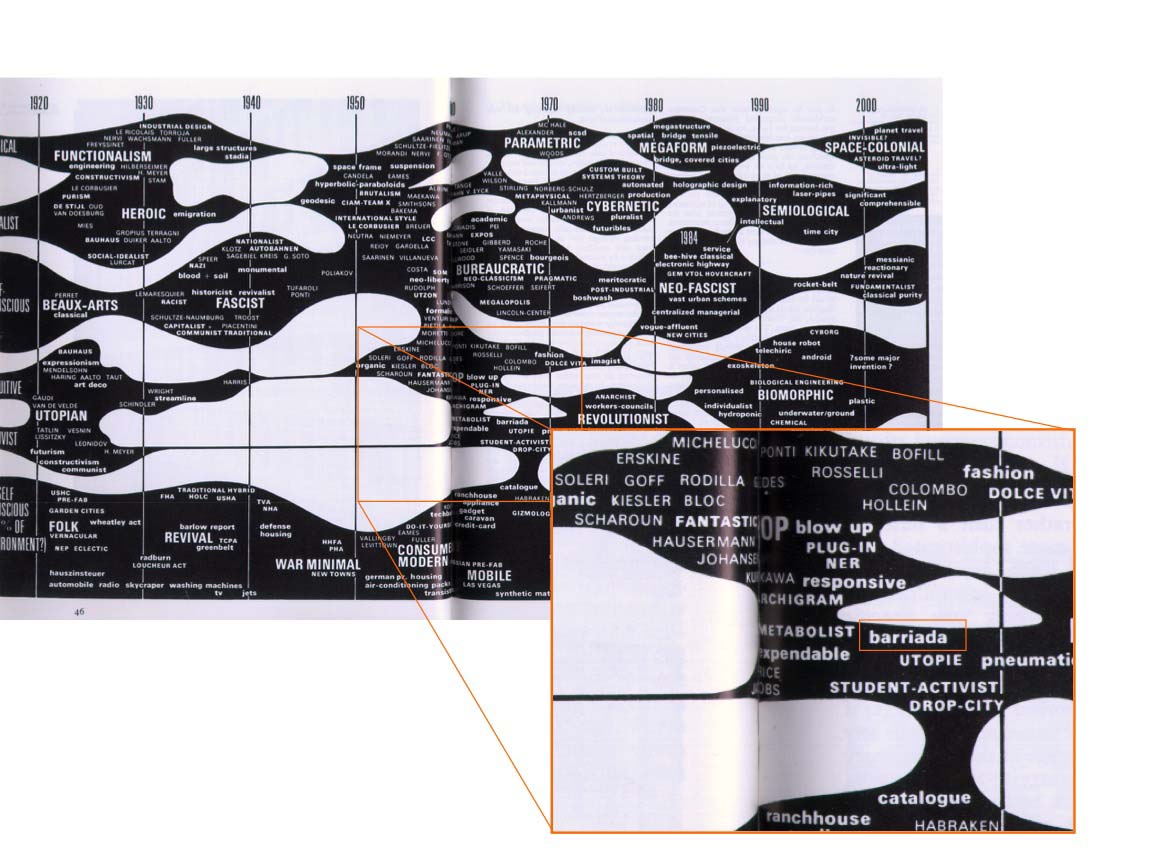






















¿Y PREVI?
Lima, Peru (2004-2011)
Research on the Experimental Housing Project PREVI
Lima’s Barriada in the early sixties
Latin-American cities were growing tremendously fast. Lima was under a steady immigration process by a population coming from the countryside lured by the potential to improve their living conditions. Upon arrival, most people solved their housing needs on their own by squatting empty land in the outskirts of the city, they settled in sophisticated patterns and progressively built their own houses. By the mid 60s, the informal housing in Lima had already outnumbered the formal.
Architectural President
In 1963, a new president was elected in Peru: Architect Fernando Belaunde. ‘A Latin-American architect of hope’ according to the cover of Time Magazine (Mar.12, 1965). Since the 1940s he had been a prominent figure among the local milieu, organizing the first school of architecture, the planning institute, as well as promoting modern social housing ensembles from the architectural magazine he directed. When he became president, he compulsively built several high and mid-rise social housing complexes. Confronted by the impracticality of his housing policy to cope with the speed of the barriadas, he reformulated the question: Why not make a project with the same parameters the dwellers of the barriadas were using (a house that grows progressively in a lot in a low rise-high density mode) using the state of the art technology to build them massively and economically.
United Nations Class
1965
President Belaunde together with government officials and led by British architect Peter Land elaborated further on how to organize such project. In 1966, the idea was presented officially to the United Nations Development Program, that recognizes its prototypical condition for the potential application of the findings of the project in the rest of the Third World, so decides to sponsor the enterprise.
The Dream Team
PREVI was devised as a competition between a prominent group of selected international and Peruvian architects. As of March 1969, the competition started. Thirteen international teams (as dictated by funding) were finally selected: Candilis Josic and Woods (France), Aldo van Eyck (Netherlands), Oskar Hansen and Svein Hatløy (Poland), James Stirling (UK), metabolisits Kikutake, Maki and Kurokawa (Japan), Atelier 5 (Switzerland), Knud Svenssons (Denmark), Toivo Korhonen (Finland), Iñiguez de Onzoño and Vasquez de Castro (Spain) Herbert Ohl (Germany), Charles Correa (India), Christopher Alexander (USA) and German Samper (Colombia).
Why choose if you can build ‘em all?
Given the experimental tone of the project and under the final consensus of the jury, it was decided to develop and build all of the 26 proposals (13 internationals and 13 Peruvians) in order to test the broadest set of concepts. Peter Land and the multidisciplinary Development Group assembled an urban layout based on the best ideas and fragments from the competition entry, which resulted in a patchwork of clusters by the different teams. From then on, a new story started in the process of bringing to reality the proposals.
PREVI part deux.
In order to build such an experiment, a research and development laboratory was set up in Lima, bringing all kind of experts into the project until 1974, when the first phase of 500 dwellings were finally built. Right then, Peruvian Military Government overthrew Belaunde and closed and dismantled PREVI’s Development Group office. It took two more years for the houses to be inhabited.
Lost wonders
Once occupied the people started almost immediately began to dismantle, change, and expand their houses, the architects’ plans for extensions were never there. None of the people received instructions on what was the best way to expand their dwellings. Some houses proved to be simple and understood like Samper’s and Candilis-Josic-Woods, others were severely modified and are unrecognizable today, for example the metabolist (was that intentional?) or Hansen’s. The most embraced element of the experiment by the locals was the PREVI brick, still in use and exported to other countries.
Wonderworld
Each proposal is a universe of wonders, but so too is the inventive mutation of each unit by its users. 40 years after the competition, PREVI remains as a source of knowledge that can answer many questions and hypothesis still to come. PREVI is potentially our contemporary Machu Picchu before Hiram Bingham.
RESEARCH TEAM: Supersudaca (Manuel de Rivero, Félix Madrazo & Juan Pablo Corvalán)
